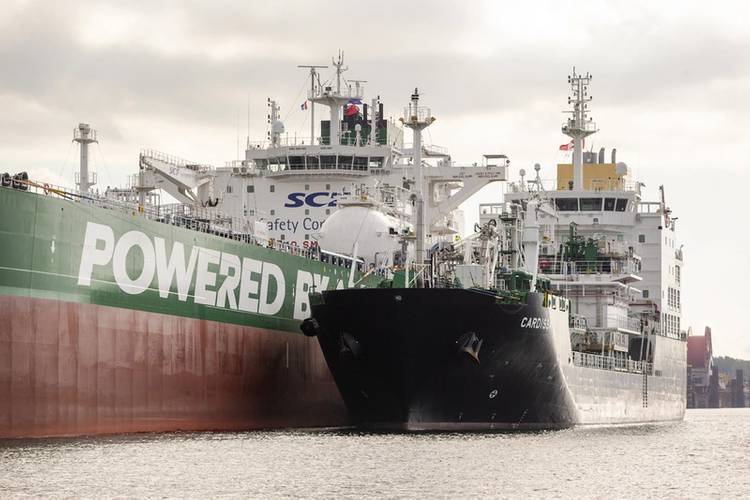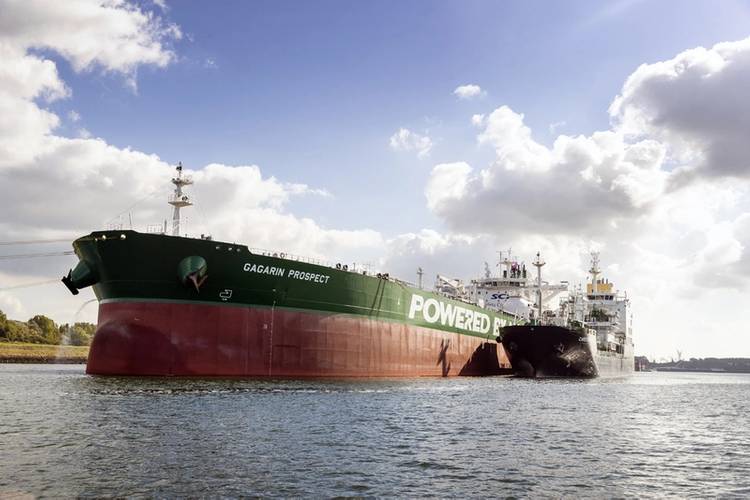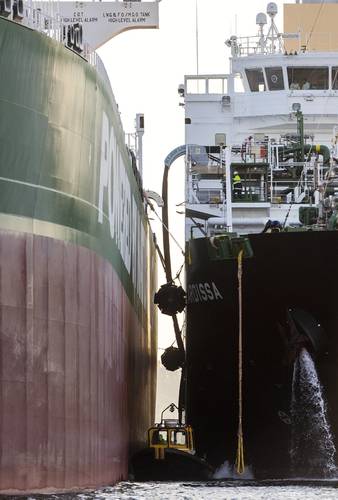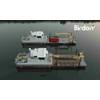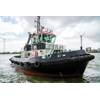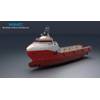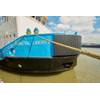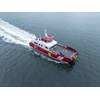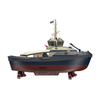Milestone LNG Bunkering for Shell and Sovcomflot in Rotterdam
Shell delivered its first ship-to-ship bunkering of liquefied natural gas (LNG) from specialized LNG bunker vessel Cardissa in the Port of Rotterdam on Tuesday, marking a number of key milestones as the maritime sector increasingly turns toward cleaner burning LNG fuel.
The bunkering of the Sovcomflot's Aframax tanker Gagarin Prospect with LNG is the first operation under a fuel supply agreement between Shell and Sovcomflot signed in 2017, which helped pioneer the expansion of LNG fuel into the tanker industry and, in general, for vessels not tied to fixed routes or set timetables.
Grahaeme Henderson, Vice President, Shell Shipping and Maritime, said, “This exciting first for the Cardissa is a tangible example of Shell driving LNG as a cleaner burning and viable fuel for the shipping industry. It is highly appropriate that we celebrate this first with Sovcomflot and their first LNG powered tanker, which we also happen to charter.”
The 114,000-dwt dual-fueled Gagarin Prospect is the world’s first LNG-powered Aframax tanker. The vessel entered into a Shell multi-year time charter in July 2018, while sister ship, Samuel Prospect, is scheduled for delivery into Shell time charter next year.
Sergey Frank, President & CEO of Sovcomflot, said, “Together with Shell, SCF Group shares a determination to reduce the environmental impact of energy shipping. This was the genesis of our ‘Green Funnel’ project, and since April 2015 we have been working very closely with Shell on every aspect of it to bring the project to successful fruition.”
In September 2015, Shell and SCF Group signed a Memorandum of Understanding to develop marine LNG fueling for large-capacity tankers.
“The first tangible result was the introduction into service of the world’s first Aframax tanker to use LNG as her primary fuel – Gagarin Prospect.” Frank said. “Her arrival and inaugural LNG bunkering, by Shell’s tanker Cardissa, heralds a new age of more sustainable and environmentally responsible shipping – especially in the high traffic areas of the Baltic and North Seas, where this new class of ‘Green Aframaxes’ will operate.”
The Shell Shipping & Maritime managed Cardissa can hold around 6,500 cubic meters of LNG fuel. The vessel’s seagoing capability enables Shell to serve customers with LNG fuel in locations throughout Europe.
Marking another first, this week's milestone LNG fuel delivery was the first ever ship-to-ship LNG bunkering to take place in the Port of Rotterdam.
Allard Castelein, CEO Port of Rotterdam, said, “The Port of Rotterdam Authority highly values and actively supports a more sustainable transport sector. As a result of cooperation with many parties like Shell and Sovcomflot we are leading the way in this transition. Compared to other fuels, LNG offers significant benefits to local air quality and contributes to the reduction of greenhouse gasses.”
The development of LNG-fueled vessels, and the supporting infrastructure, enhances Shell’s position in Europe’s natural gas and LNG market.
Shell is building a marine LNG supply chain across main shipping lanes as Sovcomflot and other ship owners and operators are increasingly choosing LNG fuel over traditional marine fuels to respond to sulphur and nitrogen oxide emissions regulations, including the IMO’s recent decision to implement a global 0.5 percent sulphur cap in 2020.
Shell will supply LNG to the world’s first LNG-powered cruise ships following an agreement with Carnival Corporation & plc. When completed, the two vessels will be the world’s largest passenger cruise ships and will enter service in northwest Europe and the Mediterranean in 2019.





